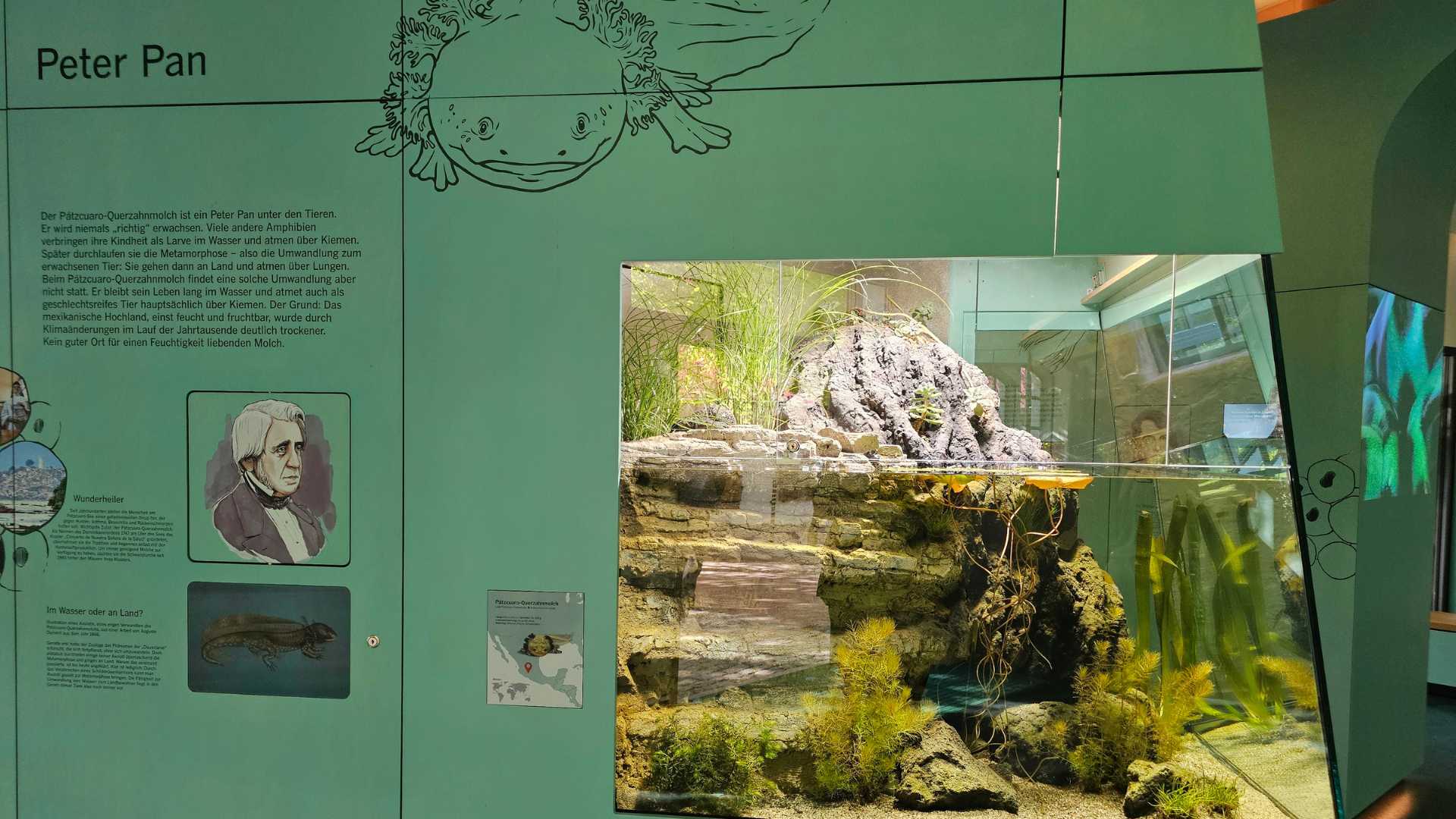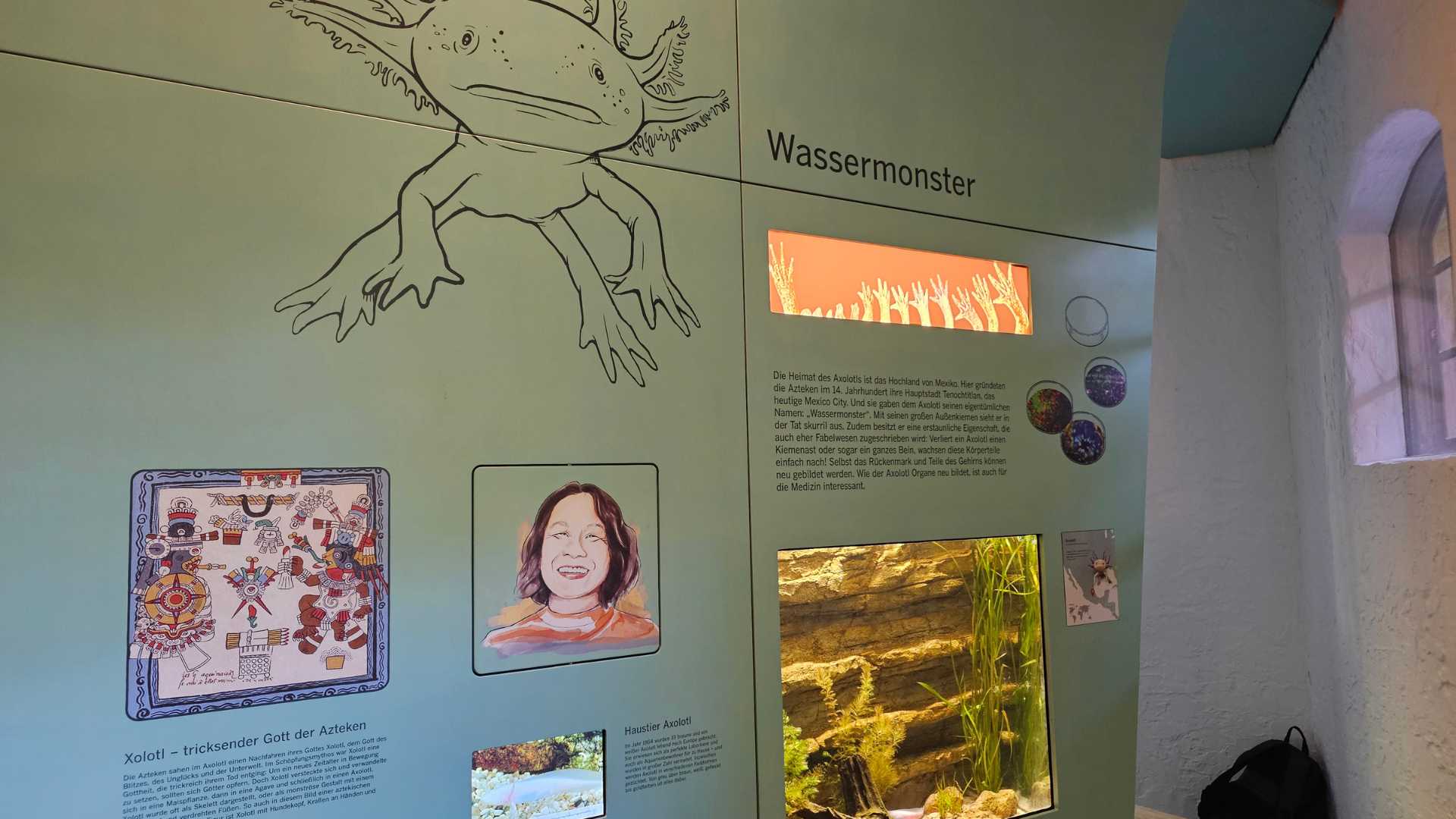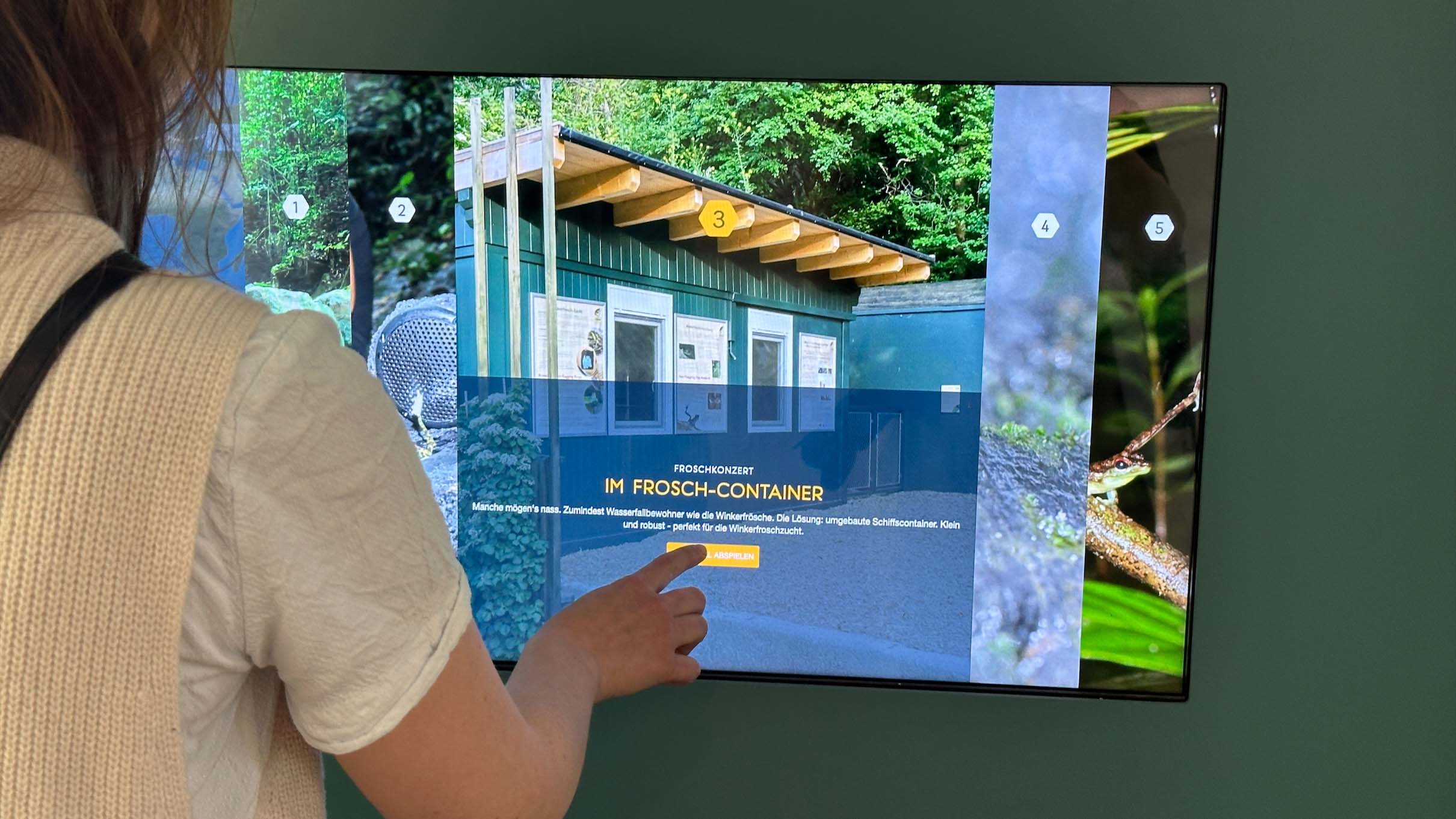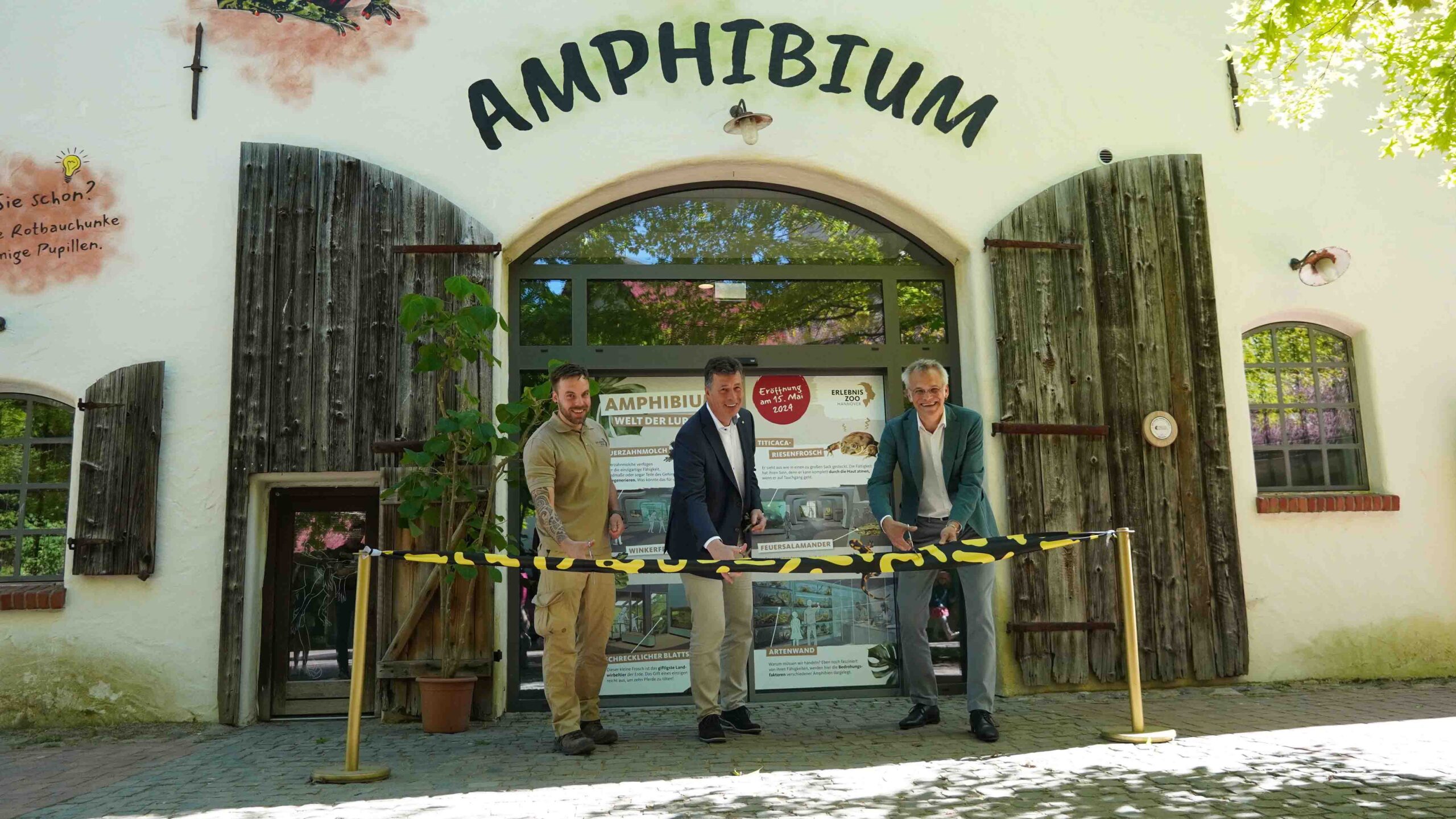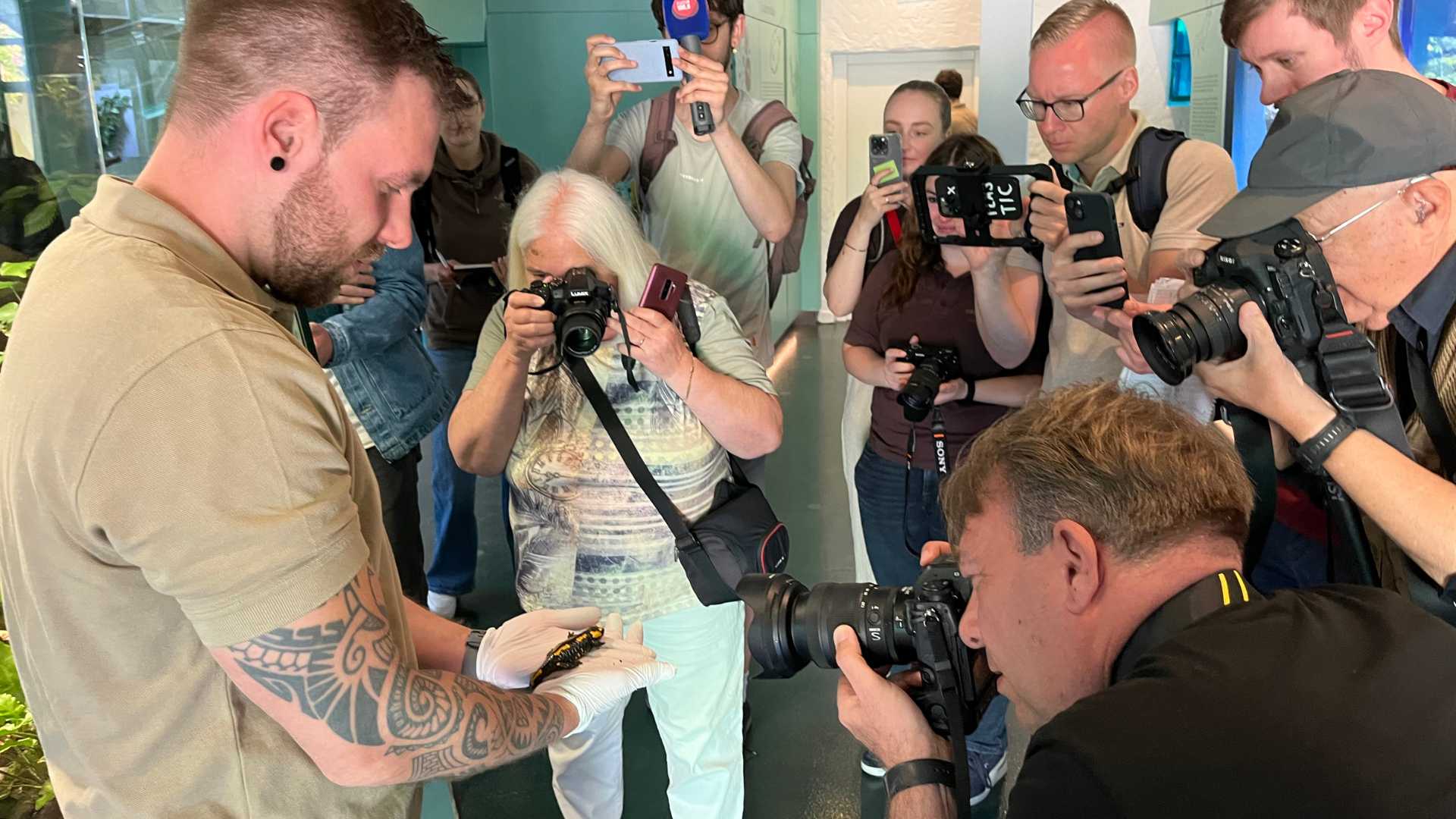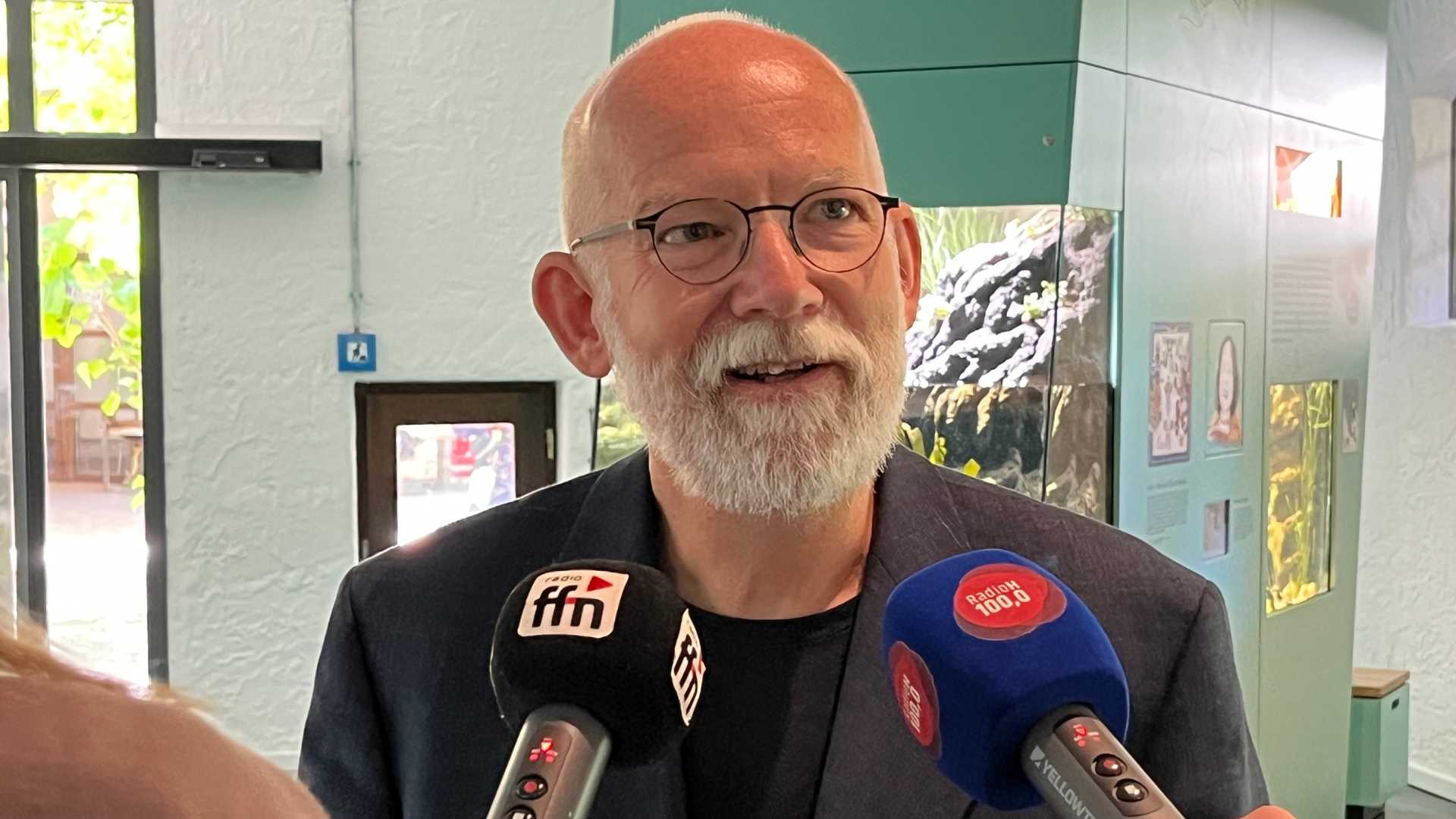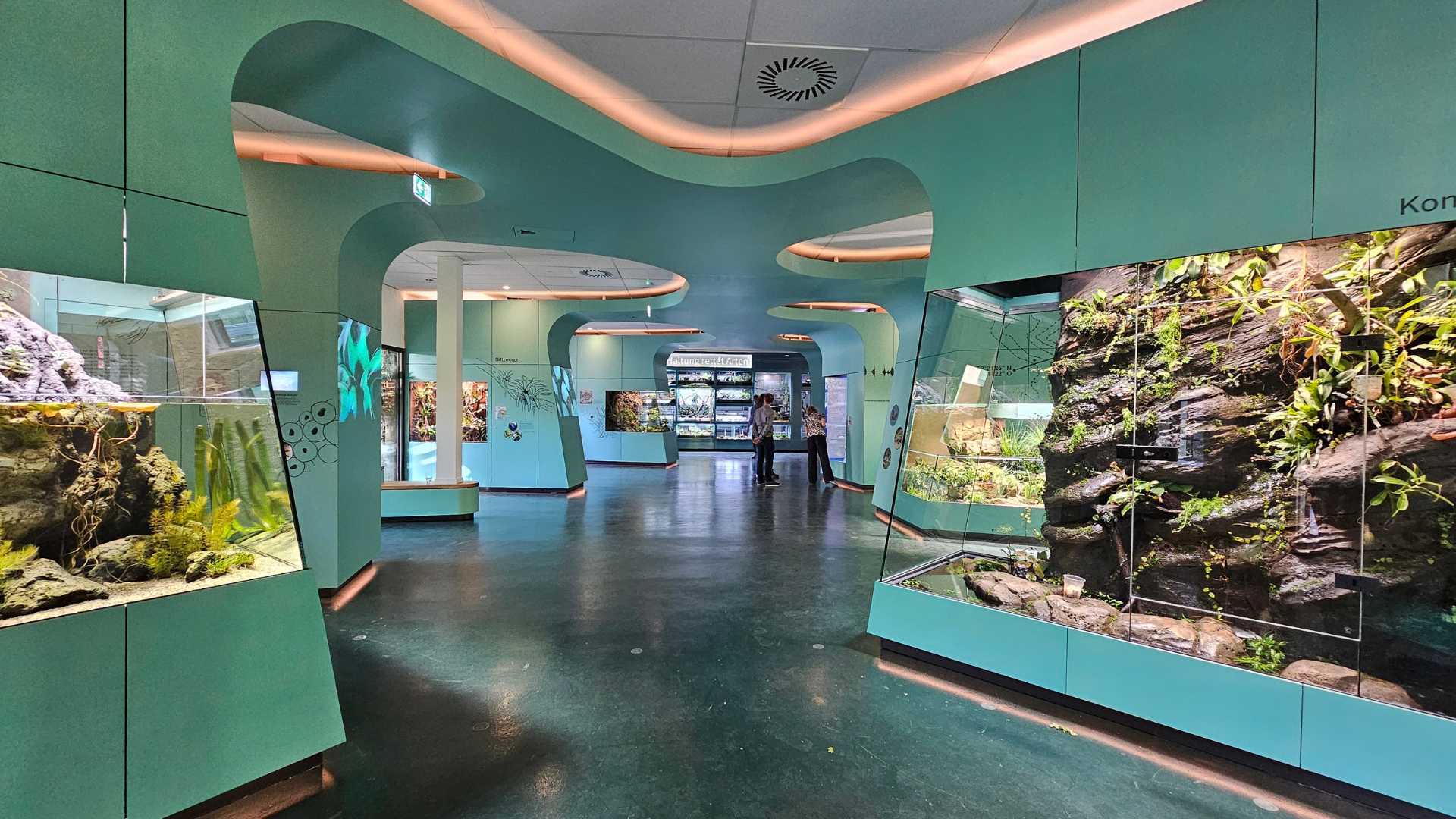
Why does the Lesser Rock Skipper wave? How does the Xenopus know when a woman is pregnant? How does the Titicaca frog manage to hang out at the bottom of the lake at a depth of a hundred meters? And why does it make sense to keep hundreds of fire salamanders in stacking boxes? Answers to these and more questions can be found in the brand new Amphibium at Hanover Adventure Zoo. The exhibition, planned by our partner Frogs & Friends and realized in cooperation with the zoo, takes visitors on a 250 square metre journey into the fascinating world of amphibians.
Depth instead of mass: modern exhibition design as a guidance system
The exhibition’s approach is to neither overwhelm visitors with information nor leave them completely alone with the frogs and salamanders. The lovingly designed animal enclosures, which are integrated into an architectural design that connects the entire room, are at the center of the staging. An organic “octopus shape” divides the amphibian into smaller themed niches with its eight “arms”. The resulting wall surfaces offer visitors numerous opportunities to delve deeper into the species on display – including digital content such as a playback station for Citizen Conservation’s creature podcasts.

Fresh and friendly: the organic design is inviting and light @ Heiko Werning
Human ambassadors for animal phenomena
Amphibians in particular tend to live out their abilities and peculiarities in secret. We only know a certain number of things because there are equally special people who are on the trail of these secrets. Their stories can also be found in the exhibition, combined with the hope that their fascination for the respective species will have a contagious effect. The series of these researchers also includes portraits of CC manure disputants such as Doris Preininger from Vienna’s Schönbrunn Zoo and private keeper Uwe Seidel.

Viennese researcher Doris Preininger studies frog communication - especially with foot-flagging frogs @ Heiko Werning

CC keeper Uwe Seidel is a dental technician by profession, but is considered one of Germany's most renowned fire salamander experts @ Heiko Werning
In the DNA of Citizen Conservation
The exhibition area ends in front of a ceiling-high terrarium wall, behind which there is a glass breeding room. Here, the focus is no longer on biotope sections, but on the new reality of species extinction – and what can be done about it. In the purpose-built facilities, amphibians are selectively bred as part of the Citizen Conservation project. Visitors can thus gain a direct insight into the necessary work of conservation breeding. While species that are already extinct because no ex-situ populations have been established for them fade away in a sad endless loop on screens to the left, an interactive screen to the right shows CC keepers animatedly demonstrating their daily species conservation work in their home terrarium – and perhaps motivating one or two zoo guests to support our project by donating or joining in.
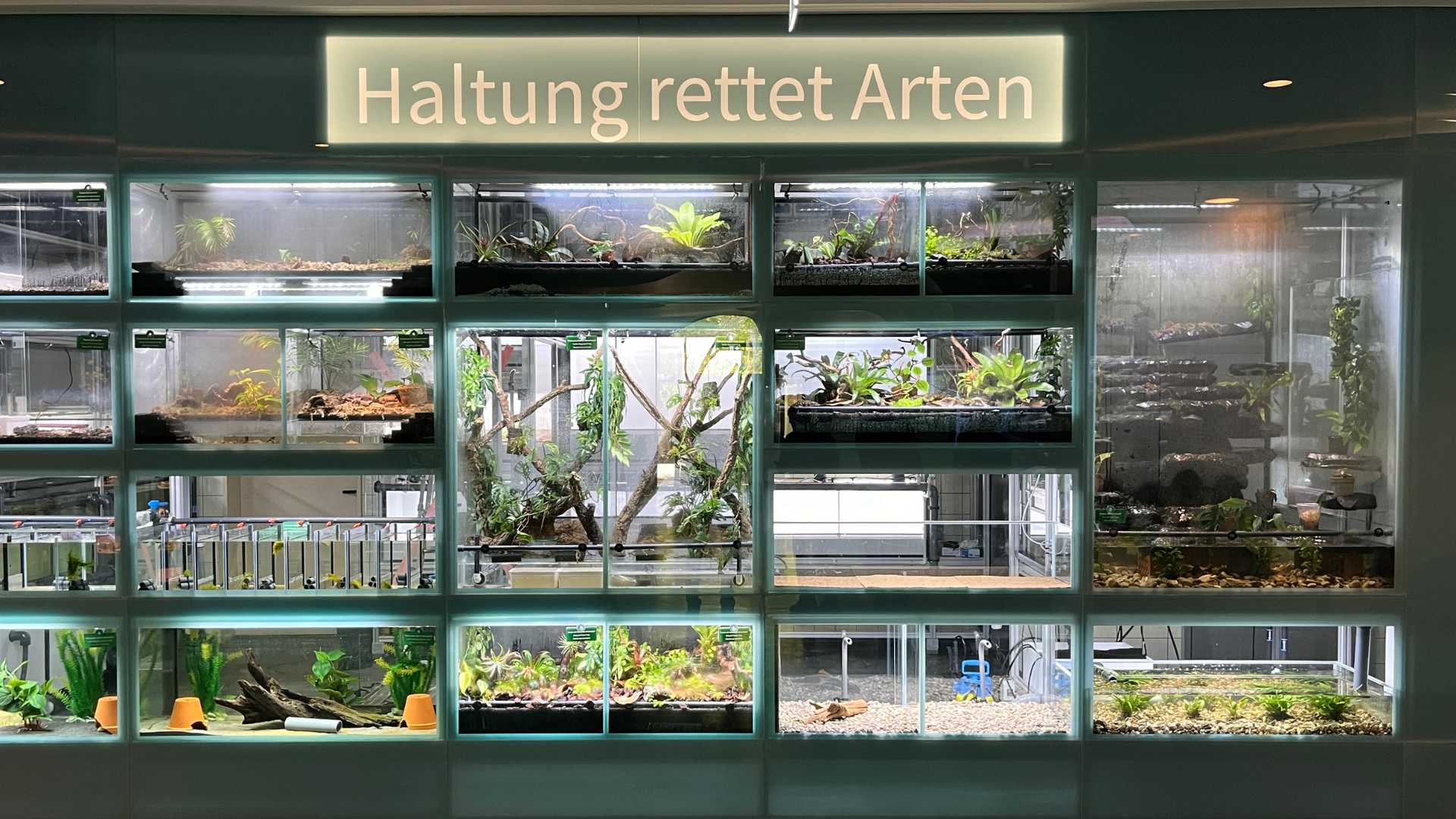
Nine of the thirteen amphibian species shown are part of Citizen Conservation’s conservation breeding program @ Heiko Werning
Digital sidekicks for people who want to know
This makes the Amphibium in Hanover the first physical CC Center: Here you can not only experience very personally why the Lesser rock skippers, Pátzcuaro Salamander, Golden Poison Frogs, Fire Salamanders, Mallorcan Midwife Toads, Titicaca Giant Frogs, Chinese Fire-bellied Toads and, planned soon, Lemur Leaf Frogs, which we care for, must not be allowed to die out under any circumstances – here, something is being done about it in concrete terms. Through targeted breeding as part of our civil society network of private individuals and institutions. The amphibium opened its doors to visitors to Hanover Adventure Zoo on May 15, 2024.

